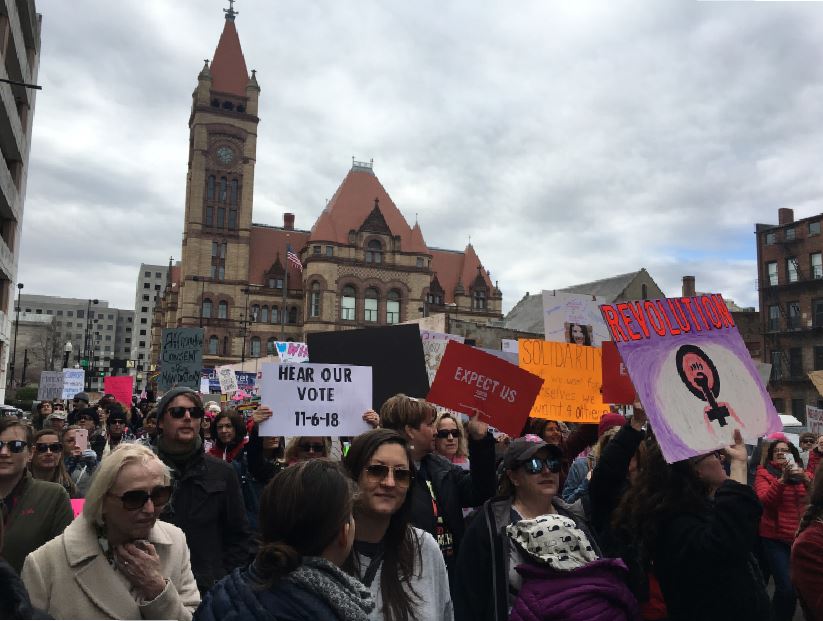Women’s March steps towards improvements
STRENGTH IN NUMBERS. Thousands of women from all over the area gathered together to show support for various causes and, most of all, women’s empowerment. This year, the march emphasized voting and making a difference at the polls. Speakers at the march promoted political campaigns and candidates.
On Sat., Jan. 20, thousands of women from all over the area dawned their pink caps, dotted the “I”’s on their signs and made their way down to the Freedom Center. It is the second year women and those in support of equal rights have joined together after the anniversary of President Donald Trump’s inauguration.
This year, however the march in Cincinnati took a slightly different course. Things began similar to last year: prior to the march, speakers took the stage to inform and promote ways to get involved and make a difference in regards to the social issues they were marching for.
Several speakers in, a chant rose up from the back of the crowd.
“March! March! March!”
The chant continued to grow louder until it became quite difficult to hear the speaker at all.
The goal of those chanting was to encourage the speakers to be cut short and, well, begin marching.
Leaders of the march encouraged everyone to be patient and listen to several more speakers before beginning the mile-long walk though the streets. But people simply would not listen. After more chanting and displeasure from the crowd, eventually people opted to simply leave and begin the march all on their own.
Before the Speakers had completed, almost half of the crowd had already embarked on the march. We were among the members of the crowd that were shocked at this act of disrespectful behavior. After all the core of the Women’s March is about being united in one place.
Does splitting the event up not also break this unity?
What was especially disappointing was how important the information the speakers were providing was.
Marching in support of a cause is wonderful, but it cannot be the end of our activism if we want to make a real difference. For example, many statistics were given about the homelessness epidemic in Cincinnati and ways to get involved with our local coalition.
Marching raises awareness for these issues, but getting involved helps to solve the problems. Both are equally important aspects of the event, and to see people try to curtail it in any way is disappointing.
However, we are not without reason. There are several solutions to this problem that could serve as a happy compromise for all parties.
The first being that it was very difficult for many people to hear or understand the speakers. Those presenting should be better informed on how to hold the microphone and have a better understanding on just how loud they need to talk.
There were also speakers making similar points and repeating each other. This in some ways dragged out parts necessarily and could be solved simply by finding a balance of topics and speech length.
Overall, one thing is clear: there will never be a perfect protest. But then again perfection is not the goal. When we come together it is to use our joint passion to make a statement. Each year we must simply strive to do so in a more effective way than the year before.







